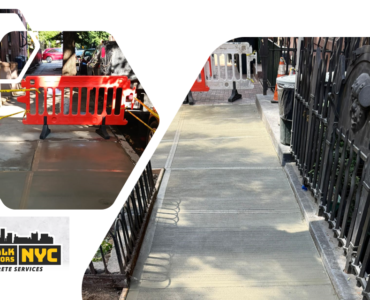Choosing the right duvet cover can significantly influence not only the style of your bedroom but also its perceived dimensions and lighting. Plain dye and stripe duvet covers each have unique effects on how a room feels and looks. This article explores how these two types of duvet covers impact room dimensions and lighting, helping you make an informed choice for your space.
1. Understanding Room Dimensions
Room dimensions refer to the perceived size and spatial arrangement of a room, which can be influenced by various elements, including color, pattern, and texture. Duvet covers, though seemingly small, can play a crucial role in shaping the perception of your bedroom space.
a. Plain Dye Duvet Covers
Simplicity and Expansion
Plain dye duvet covers typically create a sense of simplicity and continuity in a room. The absence of patterns allows the eye to move smoothly across the surface, which can make a room appear more expansive and open.
- Visual Continuity: A plain dye duvet cover, especially in light or neutral colors, provides a seamless look that contributes to an uninterrupted visual flow. This can be particularly beneficial in smaller rooms where maintaining a sense of space is important.
- Color Choices: Light colors such as whites, beiges, or soft pastels reflect more light, enhancing the sense of space and openness. They help to brighten a room, making it feel larger and more airy.
- Effect on Walls and Furniture: A plain dye duvet cover can help integrate the bedding with the rest of the room’s decor. When the duvet cover matches or complements wall colors and furniture, it creates a cohesive look that enhances the perception of room size.
b. Stripe Duvet Covers
Pattern and Perception
Stripe duvet covers introduce patterns and lines that can visually alter the perception of room dimensions. The effect of stripes on space depends on their orientation, width, and color contrast.
- Horizontal Stripes: Horizontal stripes can make a room feel wider by drawing the eye across the space. This can be useful in narrow rooms where you want to create a sense of broader width. However, they might make a room feel shorter if the stripes are thick and bold.
- Vertical Stripes: Vertical stripes tend to elongate a room, giving the impression of higher ceilings and increased height. This is particularly beneficial in rooms with low ceilings or where you want to enhance the sense of vertical space.
- Pattern and Scale: The scale and contrast of stripes can also impact how a room is perceived. Bold, wide stripes can create a focal point but may dominate a small space, while thin, subtle stripes can add texture without overwhelming the room.
2. The Role of Light in Room Perception
Lighting is a crucial element in how we perceive room dimensions and ambiance. The color and pattern of your duvet cover can affect how light interacts with your space.
a. Plain Dye Duvet Covers
Light Reflection and Brightness
Plain dye duvet covers, particularly those in light or reflective colors, enhance the brightness of a room by maximizing light reflection.
- Color Reflection: Light-colored duvet covers reflect natural and artificial light, contributing to a brighter and more open atmosphere. This can be particularly advantageous in rooms that receive limited natural light or are on the smaller side.
- Consistency in Lighting: A plain dye duvet cover allows for a consistent lighting effect throughout the room. The lack of patterns means that the bedding won’t cast distracting shadows or disrupt the flow of light.
- Room Enhancement: By reflecting light effectively, plain dye duvet covers can help to visually expand a space and enhance the overall luminosity, making the room feel more inviting and spacious.
b. Stripe Duvet Covers
Pattern and Light Interaction
Stripe duvet covers affect how light interacts with your bedding and can influence the overall lighting effect in the room.
- Shadow Play: Stripes can create interesting shadow patterns, especially if the stripes are in contrasting colors. This can add depth and texture to the bedding but may also lead to uneven light distribution if the room’s lighting is not well-balanced.
- Color Contrast: Dark stripes on a light background or vice versa can alter how light is perceived in the room. For example, high-contrast stripes can absorb and reflect light differently, creating areas of light and shadow that impact the room’s ambiance.
- Visual Interest: The dynamic nature of stripes can make a room feel more energetic and visually stimulating. However, it’s important to balance this with the rest of the room’s design to ensure that the stripes don’t overpower the space.
3. Practical Tips for Maximizing Room Dimensions and Light
a. Choosing the Right Duvet Cover
Consider Room Size and Light Levels: For smaller rooms or spaces with limited natural light, opt for plain dye duvet covers in light or neutral colors to enhance brightness and create a sense of openness. In larger rooms or those with ample light, you can experiment with stripe patterns to introduce visual interest and dimension.
Match with Existing Décor: When choosing between plain dye and stripe duvet covers, consider how they will interact with your existing room décor. Plain dye covers can offer a harmonious look, while stripe covers can be used strategically to highlight or contrast with other design elements.
b. Enhancing Light with Duvet Covers
Reflective Fabrics: Choose duvet covers made from materials that reflect light well, such as satin or high-thread-count cotton, to maximize brightness in the room.
Layering Light: Use a combination of lighting sources—such as overhead lights, lamps, and natural light—to complement the effects of your duvet cover. This helps to balance light and shadow, especially in rooms with stripe patterns.
c. Pattern and Space Management
Stripe Orientation: Use horizontal stripes to visually expand narrow rooms and vertical stripes to enhance ceiling height in low rooms. Consider the stripe width and color contrast to achieve the desired effect.
Plain Dye Accents: If you love patterns but prefer a plain dye duvet cover for its simplicity, consider adding patterned throw pillows or bed runners to introduce visual interest without overwhelming the space.
Conclusion
The choice between a plain dye and a stripe duvet cover. can have a significant impact on the perception of your room’s dimensions and lighting. Plain dye duvet covers offer a seamless, cohesive look that enhances brightness and creates a sense of spaciousness. They are ideal for maximizing light reflection and maintaining a consistent lighting effect. Stripe duvet covers, with their dynamic patterns can alter the perceived dimensions of a room. Creating a sense of width or height depending on the stripe orientation. They also introduce interesting light and shadow effects that can add depth and texture to the space. By understanding how each type of duvet cover affects room dimensions and lighting, you can make a more informed choice that aligns with your design goals and enhances the overall ambiance of your bedroom. Whether you opt for the simplicity of plain dye or the visual intrigue of stripes, the right duvet cover can transform your space into a more inviting and stylish retreat.




